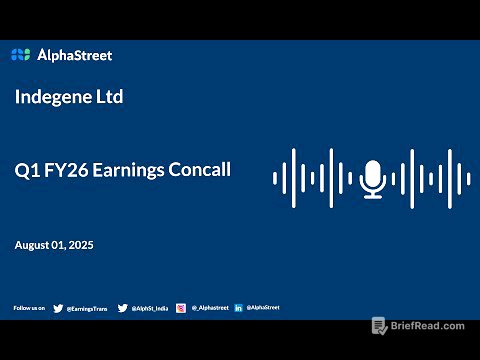TLDR;
This video provides a framework for answering product improvement questions in data science interviews. The video emphasizes the importance of structured answers and provides two approaches: analyzing the user journey map and segmenting users based on their behavior. The video also covers how to prioritize ideas, define success metrics, and design experiments to test the effectiveness of proposed improvements.
- Clarify the question: Define the goal of the improvement, the specific product or feature, and how the feature works.
- Brainstorm ideas: Analyze the user journey map to identify friction points or segment users based on their behavior to understand their needs and motivations.
- Prioritize ideas: Recommend ideas based on their potential impact on users and cost-effectiveness.
- Measure success: Define success metrics and design experiments to test the effectiveness of the proposed improvements.
Intro [0:00]
This video focuses on answering product improvement questions in data science interviews. The speaker highlights the challenges associated with this type of question, including its open-ended nature, the need for tailored answers based on the interviewer's background, and the expectation of structured responses. The speaker then presents a few example questions to illustrate the concept.
Clarifying the Question [2:27]
The first step in answering a product improvement question is to clarify the question. This involves understanding the high-level goal of the improvement (e.g., engagement, retention, revenue), narrowing down the scope to a specific product or feature, and clarifying how the feature works. The speaker emphasizes the importance of being prepared for interviewers who may not provide clear direction and encourages candidates to proactively seek clarification.
Product Improvement Ideas - User Journey Map [4:55]
One approach to brainstorming product improvement ideas is to analyze the user journey map. This involves understanding the steps a user takes when interacting with a product and identifying potential friction points. The speaker uses the example of increasing "What's on your mind" posts on Facebook to illustrate this approach. They suggest ideas like increasing the size of the UI component, using pop-up windows, sending emails or push notifications, and providing templates to simplify the posting process.
Product Improvement Ideas - User Segmentation [8:23]
Another approach to brainstorming product improvement ideas is to segment users based on their behavior. This involves identifying different groups of users (e.g., those who never post, those who haven't posted in a while, those who have the intention to post but abandon it, and those who post frequently) and analyzing their needs and motivations. The speaker uses the same Facebook example to illustrate this approach, suggesting ideas like raising awareness for new users, providing pre-generated content for those who find it difficult to create content, sending reminders to inactive users, and using machine learning models to identify factors that contribute to user engagement.
Prioritize Ideas [13:12]
After brainstorming ideas, the next step is to prioritize them. The speaker suggests two approaches: analyzing the proportion of users impacted by each idea and comparing their business impact, and recommending ideas that are most cost-effective. The speaker emphasizes the importance of considering resource constraints and selecting ideas that can drive the most impact with the least effort.
Measure Success [14:52]
The speaker emphasizes the importance of defining success metrics to measure the effectiveness of the proposed improvements. This step is particularly important when designing experiments to test the ideas. The speaker also highlights the importance of careful user splitting and avoiding interference between control and treatment groups to ensure reliable results.
Summary [15:42]
The final step is to summarize the overall approach to improving the product. This involves outlining the goal of the improvement, the brainstorming process, the prioritization criteria, and the success metrics and experimental design. The speaker encourages viewers to share their own ideas and approaches to answering product improvement questions.




![Atomic Theory of Matter in Chemistry (Atoms & Molecules) - [1-2-1]](https://wm-img.halpindev.com/p-briefread_c-10_b-10/urlb/aHR0cDovL2ltZy55b3V0dWJlLmNvbS92aS93T0dEWE5iaTJtNC9ocWRlZmF1bHQuanBn.jpg)




